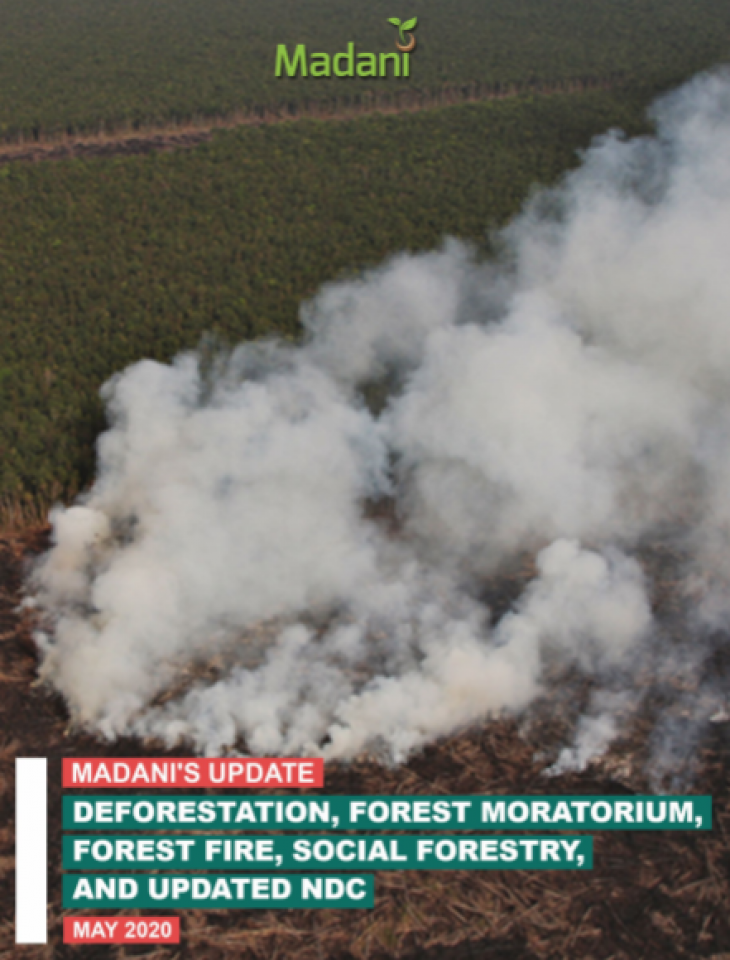MADANI’S Update: Deforestation, Forest Moratorium, Forest Fire, Social Forestry, and Updates NDC, May 2020 Edition
11/06/2020

In April 23, the Government of Indonesia announced the country’s net deforestation rate in the period of 2018-2019, which is 462.4 thousand hectares – both inside and outside the forest zone.
According to the Ministry of Environment and Forestry (MoEF), the largest deforestation in Indonesia occurred in natural forests classified as “secondary forests” (162.8 thousand hectares), the majority of which (55.7 percent or 90.5 thousand hectares) occurred in forest zone, which falls under the auspices of the Ministry, while 44.3 percent or 72.2 thousand hectares occurred outside forest zone which falls under the auspices of the Ministry of Agraria and Spatial Planning or the regional government.
In Indonesia, secondary forests are not protected by the permanent forest moratorium policy from new large-scale permits, unless already existing in legally protected conservation and protection areas. According to Madani’s spatial analysis, in 2018 there are approximately 9.5 million hectares of natural forests outside five types of existing permits/concessions, and the indicative area for social forestry (PIAPS) that must immediately be protected by the permanent forest moratorium policy for Indonesia to reach its climate target.
However, most of them are classified as secondary forests. To reach the climate target, the government must broaden the scope of the permanent forest moratorium policy to cover all natural forests, especially those that are most threatened. The distribution of natural forests that still need to be protected by the permanent forest moratorium policy can be seen in Figure 1 below, the largest is in Papua, Maluku, East Nusa Tenggara, Central Kalimantan, Central Sulawesi, and East Kalimantan.
For more information, download the updated at the below.